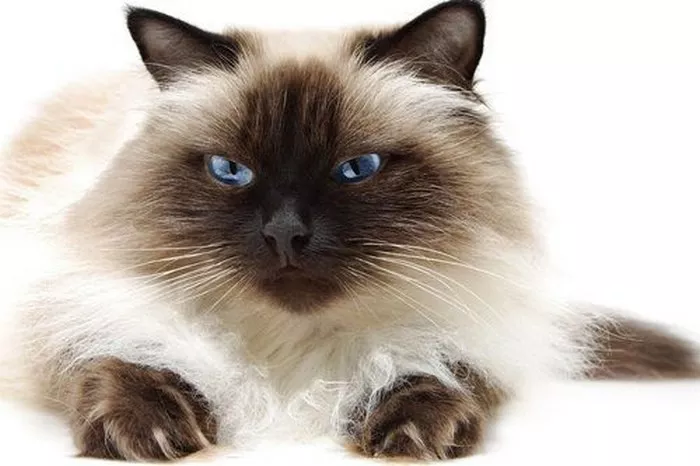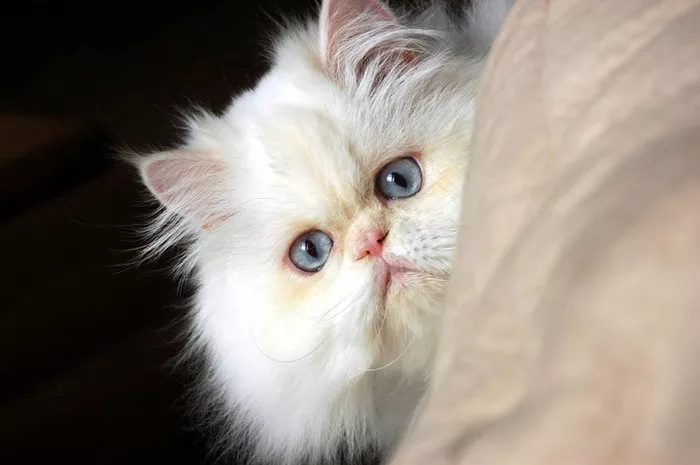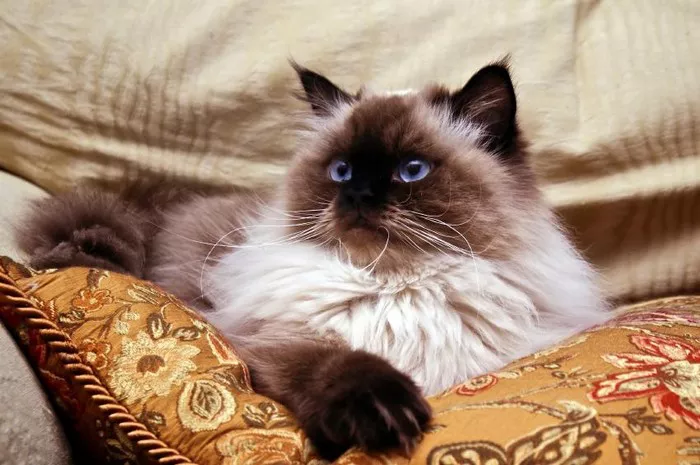Himalayan cats, known for their striking appearance and gentle demeanor, are often the subject of speculation when it comes to their vocalization habits. Some people believe that Himalayan cats meow excessively, while others argue that they are relatively quiet compared to other breeds. In this article, we will explore the truth behind the myth and delve into the factors that influence Himalayan cats’ vocalization.
Background on Himalayan Cats:
Himalayan cats, also known as Himmies, are a crossbreed between Siamese and Persian cats. They inherit the striking blue eyes of the Siamese and the luxurious long coat of the Persian, resulting in a visually stunning cat with a calm and affectionate temperament. Himalayans are known for their affectionate nature and gentle disposition, making them popular companions for families and individuals alike.
The Myth of Himalayan Cats Meowing Excessively:
One of the prevailing myths surrounding Himalayan cats is that they meow excessively compared to other breeds. This misconception may stem from their Siamese ancestry, as Siamese cats are known for their vocalization and ability to communicate through a wide range of vocal sounds. However, it is essential to distinguish between individual differences in cat behavior and breed-specific traits.
Factors Influencing Vocalization in Himalayan Cats:
While Himalayan cats may exhibit vocalization tendencies, the frequency and intensity of their meowing can vary based on several factors:
Personality: Like humans, cats have unique personalities, and some Himalayans may be more vocal than others. Factors such as genetics, upbringing, and socialization can influence a cat’s vocalization habits. Some Himalayans may be naturally chatty and enjoy vocalizing to express their needs or desires, while others may be quieter and more reserved.
Socialization: Early socialization plays a crucial role in shaping a cat’s behavior and vocalization habits. Himalayan kittens raised in a nurturing and stimulating environment are more likely to develop confident and expressive personalities, which may include vocalization as a means of communication. Conversely, cats that lack socialization may exhibit shyness or anxiety, leading to less vocalization overall.
Environmental Factors: The environment in which a Himalayan cat lives can also influence its vocalization habits. Cats may meow more frequently in response to changes or disruptions in their surroundings, such as moving to a new home, the presence of unfamiliar people or animals, or changes in their daily routine. Additionally, boredom or lack of stimulation can prompt cats to vocalize more to seek attention or entertainment.
Health Issues: In some cases, excessive meowing in Himalayan cats may be indicative of underlying health issues. Cats may vocalize more if they are in pain, discomfort, or distress due to medical conditions such as dental problems, urinary tract infections, or arthritis. It is essential for cat owners to monitor their pet’s vocalization patterns and seek veterinary attention if they notice any changes or concerns.
Dispelling the Myth:
While Himalayan cats may exhibit vocalization tendencies, it is essential to debunk the myth that they meow excessively compared to other breeds. Like all cats, Himalayans have their unique personalities and behaviors, and their vocalization habits can vary widely from one individual to another. Some Himalayans may be more vocal than others, while some may be relatively quiet and reserved.
Tips for Managing Vocalization in Himalayan Cats:
For cat owners concerned about excessive meowing in their Himalayan companions, there are several strategies to help manage and address this behavior:
Provide Mental and Physical Stimulation: Engage your Himalayan cat in interactive play sessions and provide plenty of toys and enrichment activities to keep them mentally and physically stimulated. This can help alleviate boredom and reduce the need for vocalization to seek attention or entertainment.
Establish Routine and Structure: Establishing a consistent daily routine for feeding, playtime, and rest can help reduce anxiety and provide a sense of security for your Himalayan cat. Predictability in their environment can help minimize stressors that may trigger excessive vocalization.
Address Underlying Health Issues: If you notice a sudden increase in vocalization or other changes in your Himalayan cat’s behavior, it is essential to consult with a veterinarian to rule out any underlying health issues. Prompt medical attention can help address any potential health concerns and improve your cat’s overall well-being.
Positive Reinforcement: Reinforce desired behaviors and ignore excessive vocalization to avoid inadvertently reinforcing attention-seeking behavior. Reward your Himalayan cat with treats, praise, or playtime when they exhibit quiet and calm behavior, and avoid responding to excessive meowing with attention or treats.
Conclusion:
In conclusion, Himalayan cats are not inherently prone to excessive meowing, contrary to popular belief. While some Himalayans may be more vocal than others, their vocalization habits are influenced by a variety of factors, including personality, socialization, environment, and health. By understanding and addressing the underlying reasons for vocalization in Himalayan cats, cat owners can help promote a harmonious and enriching relationship with their feline companions.

























